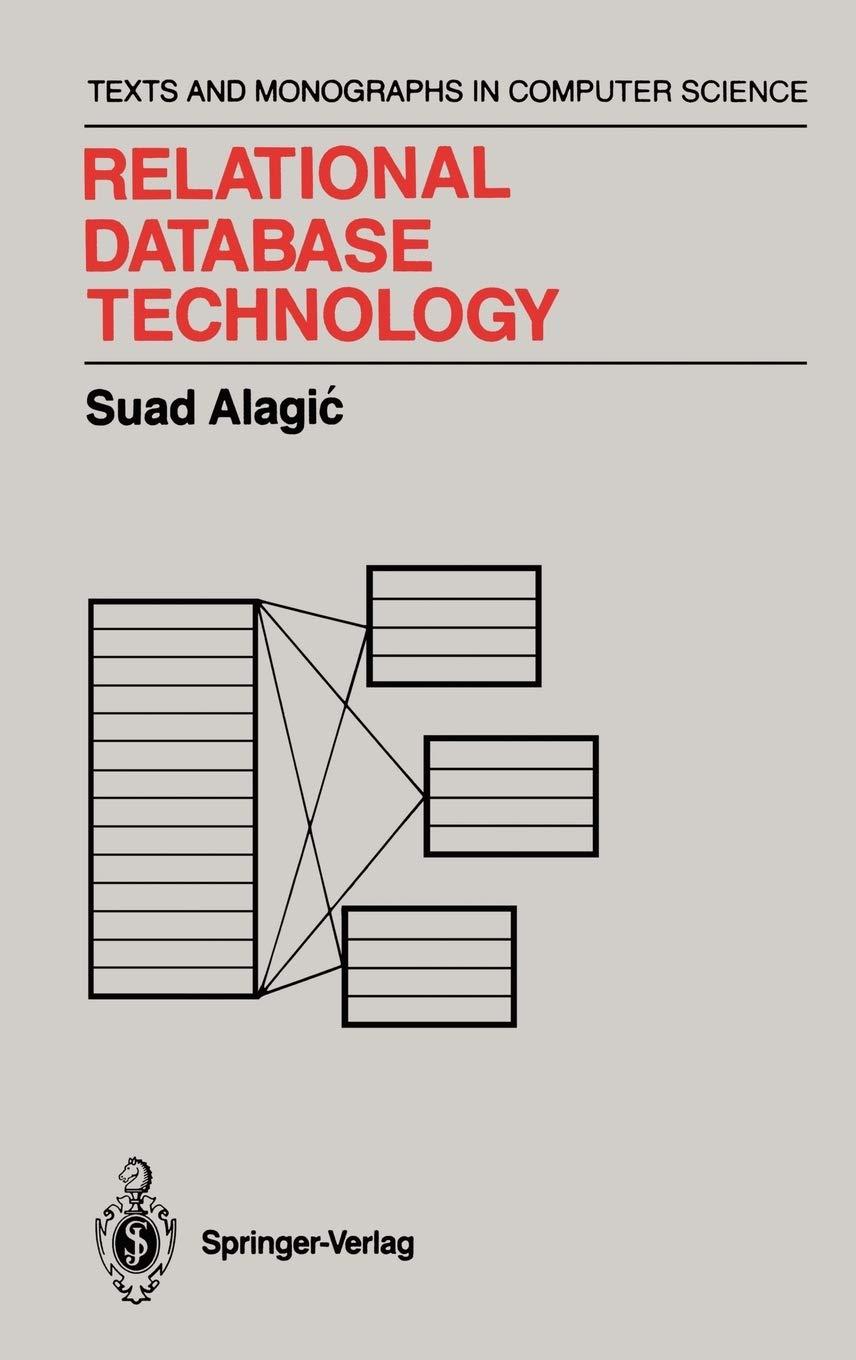Question
Data Element Town (Vertex) Create a Town class that holds the name of the town and a list of adjacent towns, and other fields as
Data Element Town (Vertex)
Create a Town class that holds the name of the town and a list of adjacent towns, and other fields as desired, and the traditional methods (constructors, getters/setters, toString, etc.). It will implement the Comparable interface. This is the class header:
public class Town implements Comparable
Two towns will be considered the same if their name is the same.
Data Element Road (Edge)
Create a class Road that can represent the edges of a Graph of Towns. The class must implement Comparable. The class stores references to the two vertices (Town endpoints), the distance between vertices, and a name, and the traditional methods (constructors, getters/setters, toString, etc.), and a compareTo, which compares two Road objects. Since this is a undirected graph, an edge from A to B is equal to an edge from B to A. This is the class header:
public class Road implements Comparable
The Data Structure Graph, implements GraphInterface
Create a Graph class that implements the GraphInterface given you. For Graph
public class Graph implements GraphInterface
Within the Graph interface is a method shortestPath, which finds the shortest path from a given Town to a destination Town. Since there is a unique shortest path from every vertex to the source, there is a back-pointer to the previous vertex. The method shortestPath calls dijkstraShortestPath which finds the shortest path from the source to every other vertex in the graph. You will be coding the Dijkstras Shortest Path algorithm. You will then be able to find the connections between two towns through the roads that connect them.
You may use the adjacency matrix or list approach found in the text book, or you may use a set of Towns and a set of Roads. The ShortestPath algorithm typically uses a weighted graph which means that the edges have a weight, and this is used to determine the shortest path. For this implementation, each weight will be the distance of the road in miles.
The Data Manager implements DataManagerInterface
Your TownGraphManager will hold an object of your Graph. Implement the TownGraphManagerInterface. There are methods to populate the graph (reading from a text file), add a town (vertices), add a road (edge), list all towns and all roads, and list towns adjacent to a given town.
Your solution will find the shortest path from a start town to a destination town. It will account for the possibility of a disjoint graph (i.e., not all vertices can be reached from all other vertices.)
You may add any methods as needed for your design.
Populating the Data Structure
You will be reading from a data file. You are provided with two sample files: MD Towns.txt and US Towns.txt along with two PowerPoint slides showing these graphs.
The Towns.txt files hold the information for the individual Towns and Roads, and is in the following format:
road-name,miles;town-name; town-name
For example:
I-94,282;Chicago;Detroit
Notice that the road-name and miles are separated by a comma, while the road information and the two towns are separated by semi-colons.
After reading these files, you will have an initial set of vertices and edges in your Graph.
Step by Step Solution
There are 3 Steps involved in it
Step: 1

Get Instant Access to Expert-Tailored Solutions
See step-by-step solutions with expert insights and AI powered tools for academic success
Step: 2

Step: 3

Ace Your Homework with AI
Get the answers you need in no time with our AI-driven, step-by-step assistance
Get Started


